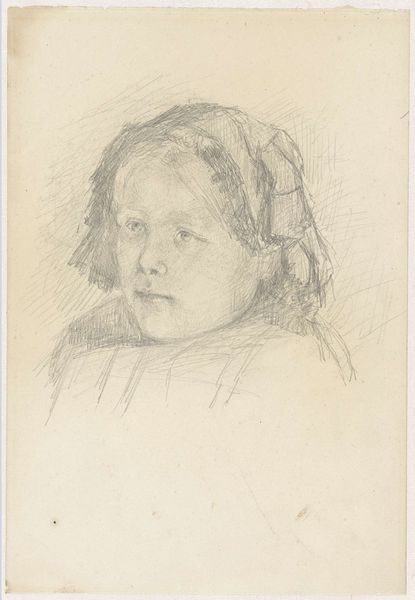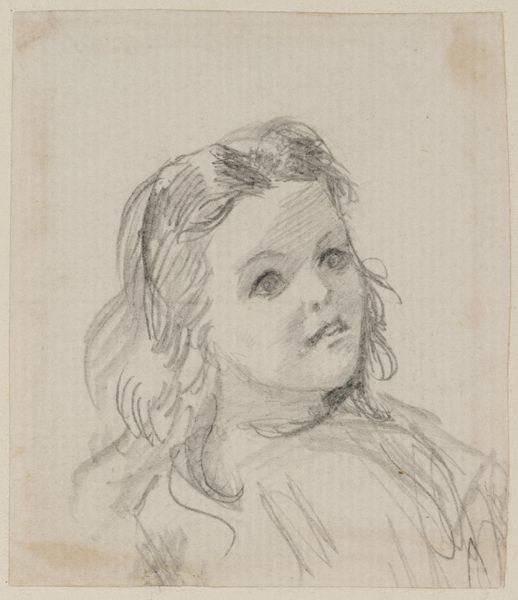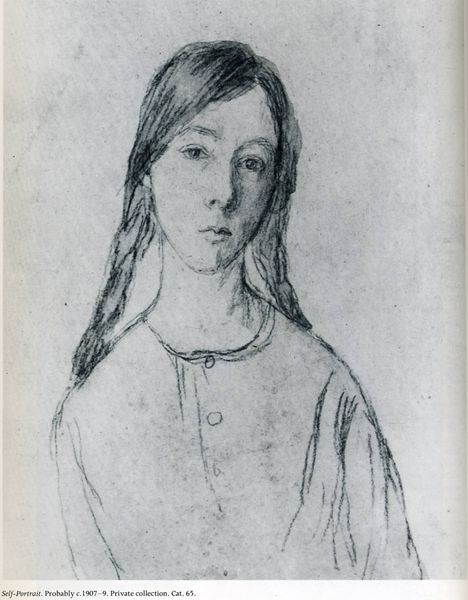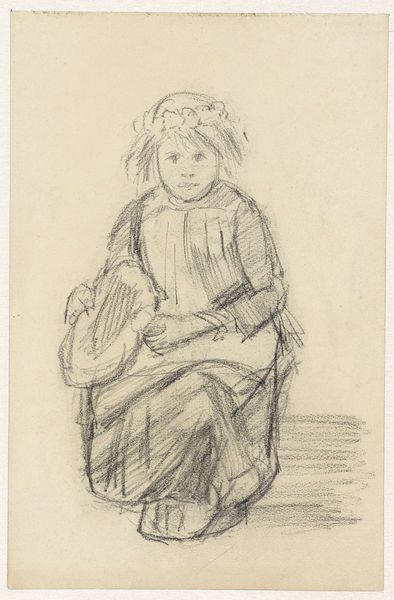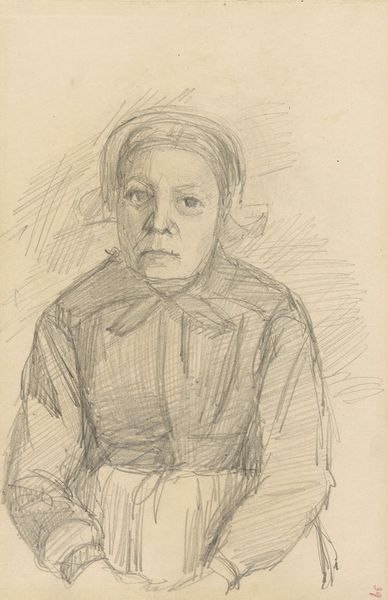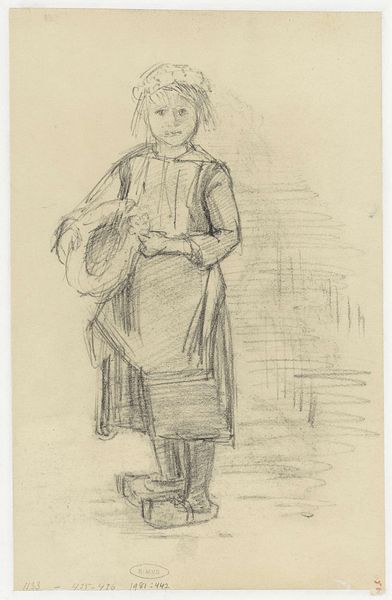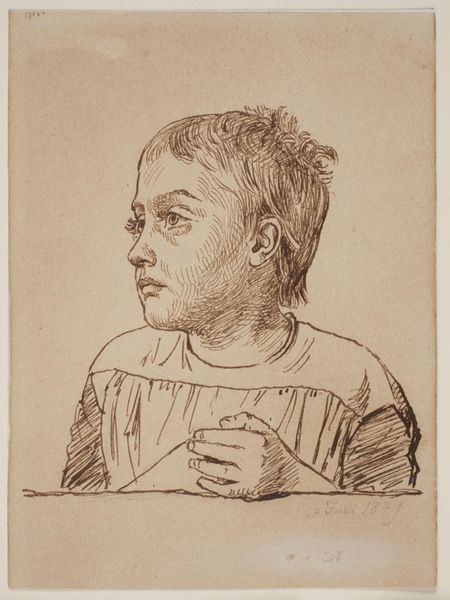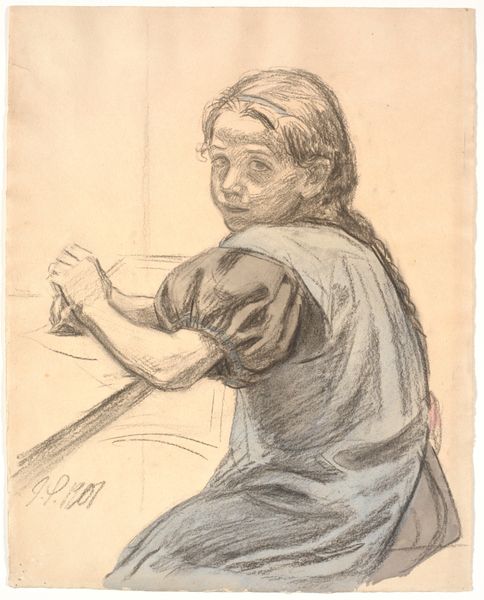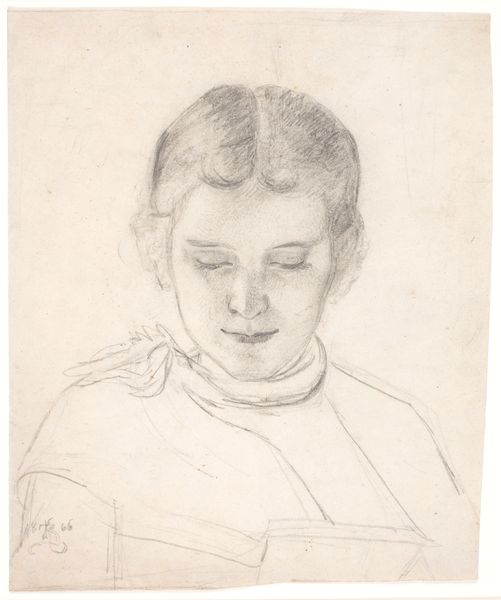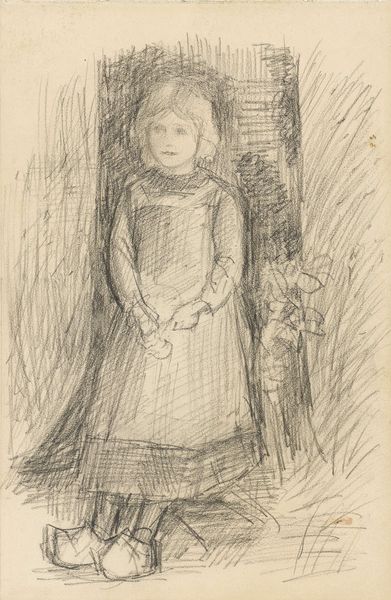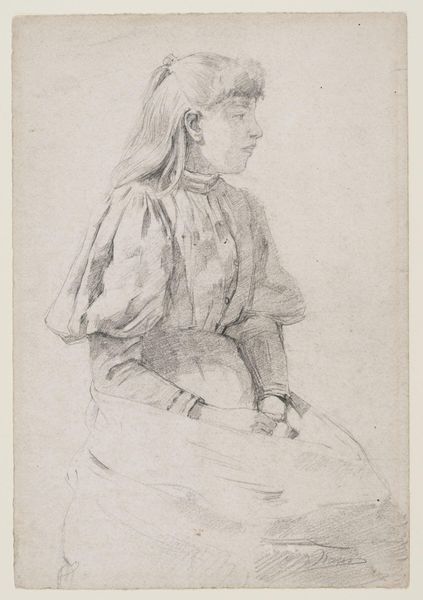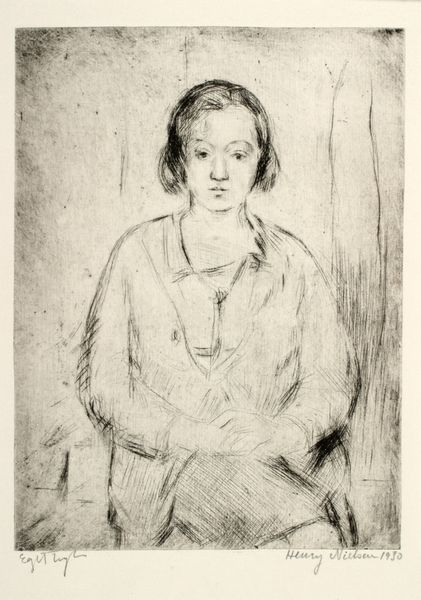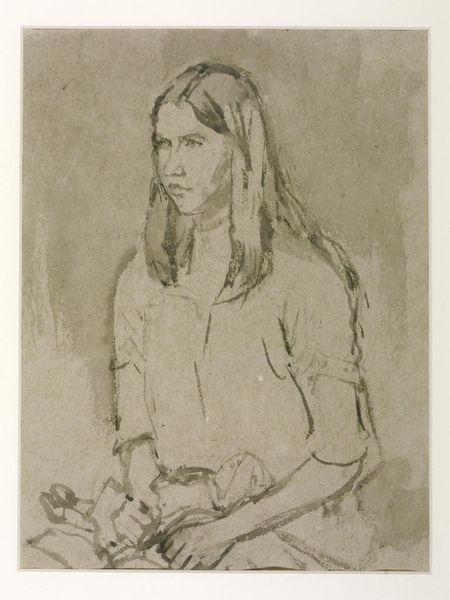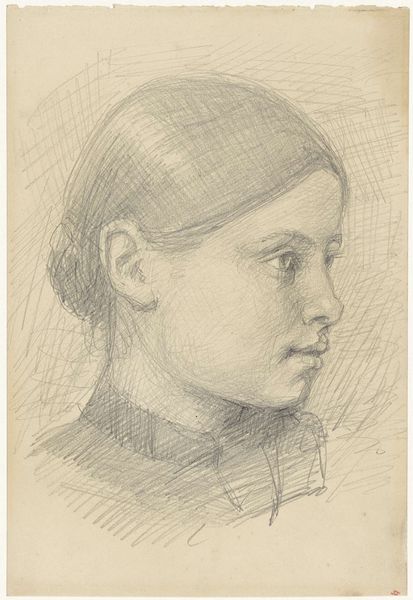
Dimensions: support: 238 x 210 mm
Copyright: CC-BY-NC-ND 4.0 DEED, Photo: Tate
Editor: Gwen John's drawing, "Annabella," shows a young woman with clasped hands. It feels very intimate and quiet. What do you see in this portrait? Curator: I see a poignant representation of female adolescence within a patriarchal society. John, a woman artist herself, captures Annabella's internal world, hinting at both vulnerability and resilience. Editor: Resilience? I didn’t pick up on that. Curator: Consider the gaze – direct, yet subtly questioning. It speaks to the complex negotiations young women faced in defining themselves. Do you see how John avoids idealization? Editor: Yes, it's a very honest depiction. I appreciate the focus on Annabella's lived experience, rather than some romanticized ideal. Curator: Exactly. It challenges the traditional, often objectified, representations of women in art history. Editor: I see that now, thanks!
Comments
Join the conversation
Join millions of artists and users on Artera today and experience the ultimate creative platform.
tate 8 months ago
⋮
The model is Marie Hamonet, a young girl who lived at Pléneuf, a village on Brittany's north coast which Gwen John visited in 1918 and 1919. She went to Brittany on her brother Augustus's urging, to recuperate from the strains she was feeling after Rodin's death. John made many drawings of Marie. She sometimes called her 'Annabella' or 'Little Annabella'. Marie later became Mme Ferrec, and lived in Paris. John drew several of the local village children, although she remarked to the American collector John Quinn that, as most of the children were working in factories, models were difficult to find. Gallery label, September 2004
